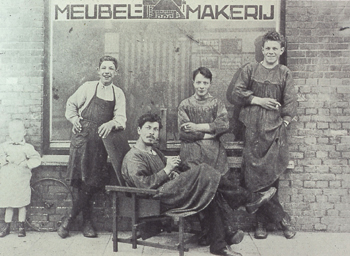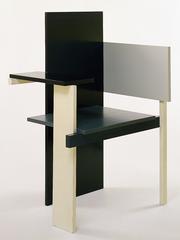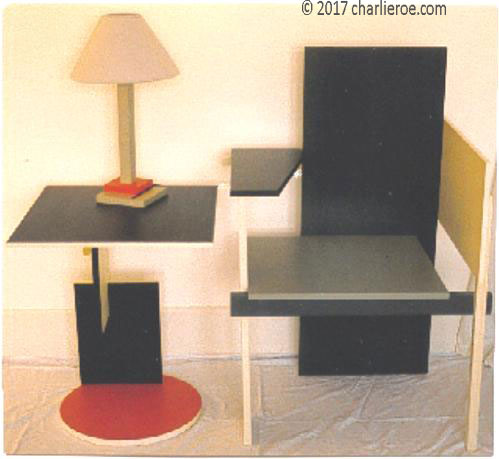
|

|

|

|
What more can be said that hasn't already. THE Modernist furniture design icon of the C20th ( probably more so than Le Corb's chaise ). Simply awe-inspiring. This really is purely a piece of sculpture to sit and admire. And it's actually quite comfortable for short spells.
The 2 photos above highlight the decisive step Rietveld took, c. 1918, to incorporate De Stijl ideas and colours into his work. The wood version, whilst still a striking shape, does not have the impact of the painted version. Interestingly, Rietveld pared the original version down even more, by removing the side panels under the armrests.
Contact Us for a quote or more information

|

|
Shown above is a plan of all the components for the chair. Rietveld at the time was searching for ways to mass produce chairs, and the chairs give the impression of having been mass produced. However, their unusual design and the finishing make them difficult to produce in volume.

|

|

|
The Berlin chair
Another famous Rietveld piece, produced for an exhibition in Berlin
in the twenties. The chair, in shades of white, grey and black, uses
several planes to produce such an unusual spatial effect. Look at
the similar design ideas between this chair and the 'Schroeder' house
for example.
The original chair armrest was rectangular and made it awkward sitting down in the chair. Rietveld amended this in 1965 by using an angled armrest ( shown below ), which makes it much more comfortable to sit on, and adds more visual variety to the design. POA.
Shown with the chair is the equally well known End Table. Again clever use of coloured planes to produce such a striking design. Shown on a separate page.

|
These designs are being registered as they are added to the website. The images may not be reproduced without our written permission. All rights reserved.